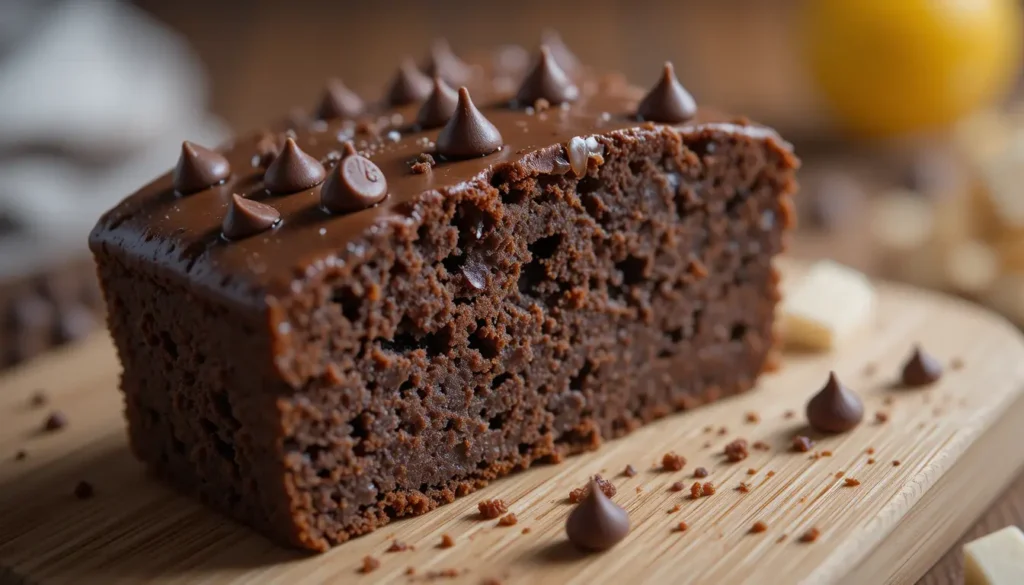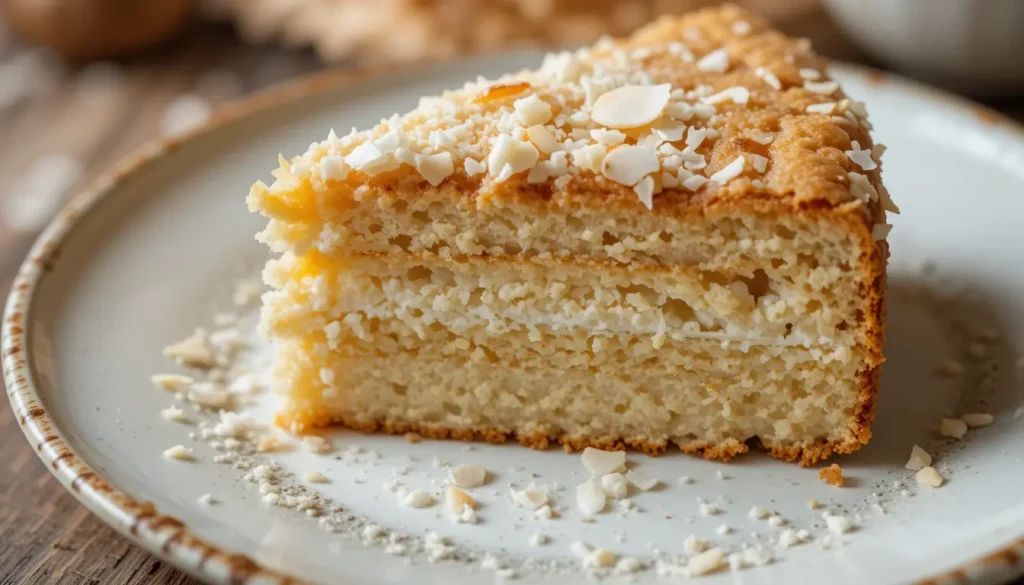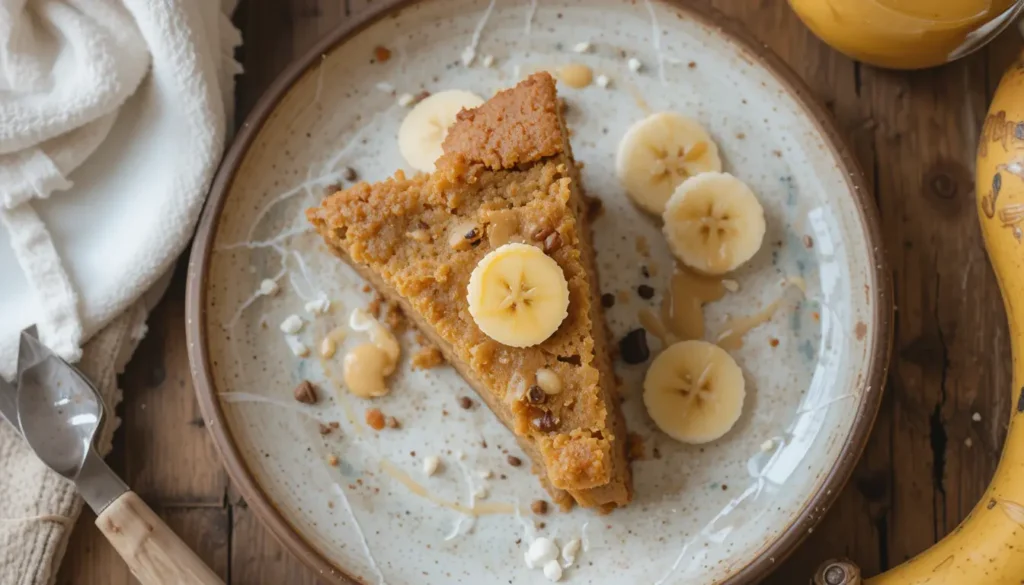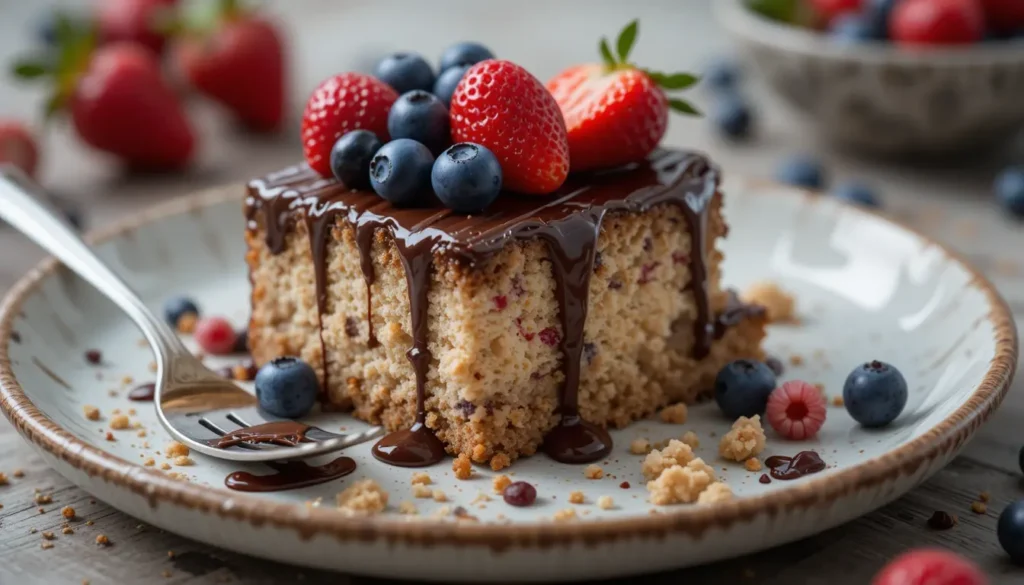Protein cakes are quickly becoming a favorite snack for anyone interested in fitness, health, or maintaining an active lifestyle. Combining the indulgence of a sweet treat with the muscle-boosting power of protein, these cakes offer a guilt-free way to enjoy a dessert while nourishing your body. Whether you’re an athlete, a gym-goer, or simply someone trying to eat healthier, protein cakes can help you meet your nutritional needs without sacrificing flavor.
This article delves into the world of protein cakes, exploring their benefits, common ingredients, recipes, and how they can be tailored to various dietary needs. From muscle recovery to weight management, protein cakes offer a versatile solution for anyone looking to satisfy their sweet tooth while keeping their protein intake high.
Table of Contents
Benefits of Protein Cake
Nutritional Benefits of Protein

Protein is a vital nutrient for everyone, especially for those who lead active lives. It plays a crucial role in muscle repair, immune function, hormone production, and even the maintenance of healthy skin, hair, and nails. Protein cakes, by providing a concentrated dose of protein, make it easier to get your daily intake in a tasty and convenient form.
For fitness enthusiasts, consuming protein after a workout helps repair and rebuild muscle fibers that were broken down during exercise. This aids in faster recovery and more significant muscle growth over time. Additionally, protein is known for its satiating effect, meaning that protein-rich foods like protein cakes can help curb hunger, keeping you fuller for longer and reducing the chances of overeating or snacking on unhealthy options.
Protein Cake for Muscle Recovery
One of the key reasons why protein cakes are so beneficial is their ability to support muscle recovery. After an intense workout, your muscles need protein to repair and grow stronger. A protein cake can provide the essential amino acids your body needs for this process, helping to speed up recovery and reduce muscle soreness.
For individuals who struggle with post-workout recovery, protein cakes can be a convenient way to meet nutritional needs while satisfying your cravings. Instead of opting for sugary, low-nutrient snacks, protein cakes offer a sweet, satisfying treat that can contribute to better muscle health and overall fitness progress.
Protein Cake for Weight Management
If you’re looking to manage your weight or reduce body fat, protein cakes can be a fantastic tool. Protein plays an essential role in promoting feelings of fullness, which can help reduce overall calorie consumption. By eating a protein cake, you’re not only nourishing your muscles but also controlling hunger, which might otherwise lead to unhealthy snacking or overeating.
Moreover, protein is known to have a higher thermic effect compared to fats and carbohydrates, meaning it requires more energy for digestion. This can lead to a slight increase in calorie expenditure after eating, making protein cakes a great choice for anyone looking to manage their weight while still enjoying delicious foods.
Common Ingredients in Protein Cake
A great protein cake starts with quality ingredients. The most crucial component is the protein source, but there are many other healthy ingredients that can be incorporated into your recipe to enhance both the nutritional value and the flavor of your cake. Below are some of the most common ingredients found in protein cakes.
Whey Protein
Whey protein is one of the most popular protein powders used in protein cakes. It’s derived from milk and is known for its high-quality amino acid profile. Whey protein is rapidly absorbed by the body, making it an excellent choice for post-workout recovery. It also helps improve muscle protein synthesis and promotes muscle growth.
Casein Protein
Casein is another milk-based protein that is digested more slowly than whey. While whey protein is ideal for quick muscle repair, casein provides a more sustained release of amino acids over several hours. This makes casein an excellent choice for a bedtime snack, providing your muscles with a steady supply of protein while you sleep.
Plant-Based Protein
For those who follow a vegan or vegetarian diet, plant-based protein powders, such as pea protein, hemp protein, and brown rice protein, are fantastic options. These proteins offer a complete amino acid profile, although they are typically absorbed more slowly than animal-based proteins. Many protein cakes use plant-based protein to cater to those who avoid dairy or animal products.
Other Healthy Ingredients to Add
While the main focus of protein cakes is on protein, there are many other ingredients that can be added to enhance both flavor and nutrition. Here are some options:
- Nuts: Almonds, walnuts, and cashews provide healthy fats, fiber, and additional protein, making them a perfect addition to protein cakes.
- Seeds: Chia seeds, flaxseeds, and pumpkin seeds are high in fiber, omega-3 fatty acids, and protein, offering a nutritious boost to your cake.
- Fruits: Bananas, berries, and apples can add natural sweetness to your cake while providing vitamins, minerals, and fiber.
- Sweeteners: To keep the sugar content low, many protein cake recipes use natural sweeteners like stevia, monk fruit, or maple syrup, which provide sweetness without the blood sugar spike of refined sugar.
How to Make a Simple Protein Cake at Home

Making a protein cake at home is simple, and the best part is that you can customize it to your liking. Here’s a basic recipe for a classic protein cake using whey protein.
Ingredients:
- 1 scoop of whey protein powder (your choice of flavor)
- 1/2 cup of almond flour
- 1/4 cup of oats
- 2 eggs
- 1/4 cup of unsweetened almond milk
- 1 tablespoon of coconut oil (or another healthy fat)
- 1 teaspoon of baking powder
- 1/2 teaspoon of vanilla extract
- A pinch of salt
- Optional: 1/4 cup of dark chocolate chips or a handful of nuts
Instructions:
- Preheat your oven to 350°F (175°C) and grease a cake pan or line it with parchment paper.
- In a large bowl, whisk together the protein powder, almond flour, oats, baking powder, and salt.
- In another bowl, beat the eggs and add the almond milk, coconut oil, and vanilla extract.
- Combine the wet and dry ingredients until a smooth batter forms. If you like, fold in chocolate chips or nuts at this point.
- Pour the batter into the prepared cake pan and bake for 20-25 minutes or until a toothpick comes out clean.
- Let the cake cool before slicing and enjoying!
Protein Cake Variations
Protein cakes are incredibly versatile, and you can customize them with various flavors and ingredients to suit your tastes or dietary preferences. Whether you prefer chocolate, vanilla, or something more exotic, there’s a protein cake variation for everyone.
Protein Cake for Different Dietary Needs
Protein cakes are not just for those following traditional diets. They can easily be adapted to suit various dietary restrictions, including gluten-free, vegan, or low-carb diets. This flexibility makes protein cakes accessible to a wider audience. Let’s explore how you can modify your protein cake to meet different dietary needs.
Gluten-Free Protein Cake
For those who avoid gluten due to celiac disease or gluten sensitivity, it’s easy to make a gluten-free protein cake. The key is to swap out traditional wheat flour for gluten-free alternatives like almond flour, coconut flour, or oat flour. These flours are naturally gluten-free and add their own nutritional benefits, like healthy fats and fiber.
Vegan Protein Cake

For those following a plant-based diet, you can easily make a vegan protein cake. The key difference is substituting eggs and dairy with plant-based alternatives. Vegan protein powder, such as pea protein or hemp protein, provides the necessary protein boost without animal products.
Adjusting Protein Levels for Different Goals
Protein cakes aren’t just for muscle recovery and weight loss; they can also be tailored to meet specific fitness goals. Depending on whether you’re aiming for muscle gain, weight maintenance, or fat loss, you can adjust the protein levels to suit your needs.
For Muscle Gain
To build muscle, you need to consume a higher amount of protein. For a protein cake aimed at bulking, increase the protein content by using more protein powder or adding additional sources of protein such as Greek yogurt or cottage cheese. You can also add extra healthy fats like nut butter to increase calorie intake.
For Fat Loss
If you’re aiming to lose fat, you’ll want to focus on high-protein, low-calorie options. Choose a lean protein powder (like whey isolate) and limit the use of high-calorie ingredients like nut butter or chocolate chips. The goal is to create a filling, satisfying cake that won’t cause you to overeat while still providing enough protein for muscle retention.
For Maintenance
If you’re maintaining your weight and looking for a balanced treat, aim for a moderate protein intake that doesn’t go overboard. A typical protein cake recipe with one scoop of protein powder is sufficient to help maintain muscle mass without excess calorie consumption.
Nutritional Benefits of Protein Cake
Protein cakes are not only a delicious treat but also offer several key health benefits. They provide a well-balanced mix of macronutrients, vitamins, and minerals that are essential for various bodily functions. Here’s why protein cakes should be part of your regular diet, especially if you’re into fitness or trying to maintain a healthy lifestyle.
Balanced Macronutrient Profile
A well-made protein cake provides a balanced blend of macronutrients—protein, carbs, and fats—each of which plays a crucial role in overall health.
Protein:
As mentioned, protein is essential for muscle growth and repair. It helps build and maintain lean muscle mass, supports immune function, and even assists in hormone production. Consuming a balanced amount of protein can help with recovery and boost your metabolism.
Carbohydrates:
Carbs provide energy for your body and are especially important for people who engage in regular physical activity. While protein cakes are typically lower in carbs compared to traditional cakes, they still provide enough to fuel your workouts and replenish glycogen stores post-exercise. You can modify the carb content depending on your goals, choosing low-carb ingredients like almond flour, or adding oats or fruits for extra energy.
Healthy Fats:
Fat is a crucial part of your diet, supporting brain health, hormone production, and the absorption of fat-soluble vitamins (A, D, E, and K). Healthy fats, such as those from nut butters, avocado, or coconut oil, can add richness to the flavor of your protein cake and help keep you satisfied longer. When consumed in moderation, these fats contribute to a balanced, nutritious diet.
Rich in fiber:
Fiber plays an important role in digestion and can help prevent constipation. Many of the ingredients commonly used in protein cakes, such as almond flour, coconut flour, or oats, are high in fiber. Including fiber-rich ingredients not only improves the texture of your cake but also makes it a more filling and satisfying snack. Additionally, fiber supports healthy blood sugar levels, which can reduce cravings and improve energy levels throughout the day.
How to Incorporate Protein Cake into Your Diet
Protein cakes are an excellent way to meet your daily protein needs, but how can you best incorporate them into your diet? Here are some tips on how to enjoy protein cakes as part of a balanced eating plan.
Post-Workout Fuel
After a strenuous workout, your muscles need protein to repair and rebuild. A protein cake can be a perfect post-workout snack because it offers both protein and carbohydrates to support muscle recovery and glycogen replenishment. The combination of protein and carbs helps your body recover faster, reducing muscle soreness and promoting growth. For a bonus, pair your protein cake with a source of hydration, like water or a sports drink, to restore electrolytes.
Snack or Dessert
Protein cakes make an excellent snack or dessert option. Whether you’re craving something sweet in the afternoon or after dinner, a protein cake can be a healthier alternative to traditional sugary desserts. Instead of reaching for a sugary cake or snack loaded with empty calories, a protein cake provides long-lasting energy and keeps you satisfied.
Meal Replacement
Protein cakes can also serve as a light meal replacement. For a balanced meal, pair your protein cake with a source of healthy fats, such as avocado, or a serving of fruit for added fiber and nutrients. This makes the protein cake a more complete meal, providing all the macronutrients you need to fuel your day without excess calories.
Customizing Your Protein Cake

One of the great things about protein cakes is that they are incredibly versatile. Depending on your dietary preferences, fitness goals, and flavor cravings, you can easily customize your protein cake. Here are some ideas for customizing your protein cakes to fit your needs:
Adding Superfoods
You can boost the nutritional value of your protein cake by adding superfoods. Consider incorporating ingredients like chia seeds, flax seeds, spirulina powder, or matcha powder for an extra dose of nutrients. These superfoods add antioxidants, healthy fats, and fiber, all while complementing the flavor of your cake.
Mixing in Nuts and Seeds
For added texture and crunch, toss in a handful of nuts or seeds. Walnuts, almonds, or pumpkin seeds not only provide healthy fats but also add a satisfying crunch to your protein cake. Plus, these ingredients are packed with vitamins and minerals that contribute to heart health and overall well-being.
Experimenting with Flavors
Protein cakes are not just limited to the traditional chocolate or vanilla flavor. You can experiment with a variety of flavor combinations, such as:
- Cinnamon roll protein cake: Add ground cinnamon and a touch of nutmeg for a spiced flavor.
- Carrot cake protein cake: Incorporate grated carrots, cinnamon, and raisins for a healthier take on the classic dessert.
- Mint chocolate protein cake: Add a few drops of peppermint extract for a refreshing minty twist.
- Lemon poppy seed protein cake: Lemon zest and poppy seeds create a zesty, fresh flavor profile.
The possibilities are endless, so feel free to get creative with your protein cake flavors!
FAQs: Protein Cake Variations
2. Can protein cakes be made without protein powder?
Yes, protein cakes can be made without protein powder by using alternatives like Greek yogurt, cottage cheese, or even nut butters that are rich in protein. You can also use ingredients like eggs, oats, or almond flour to boost the protein content.
3. Are protein cakes suitable for a vegan diet?
Yes, you can make vegan-friendly protein cakes by using plant-based protein powders (like pea or hemp protein) and substituting eggs with flax eggs or chia seeds. Plant-based milk and vegan-friendly sweeteners can also be used to keep the recipe fully vegan.
4. How can I make protein cakes lower in sugar?
To make protein cakes lower in sugar, use natural sweeteners like stevia, monk fruit, or erythritol. You can also reduce or eliminate added sugars by relying on the natural sweetness of fruits like bananas, applesauce, or berries.
5. Can I use different flavors of protein powder in these cakes?
Absolutely! You can experiment with various flavors of protein powder such as chocolate, vanilla, strawberry, or even more exotic flavors like matcha or chai. This will alter the taste of the cake, giving you endless flavor combinations to explore.
Choosing the best cream cheese for protein-enhanced cakes and desserts
Conclusion:
Protein cakes are a fantastic way to combine indulgence with nutrition. Whether you’re trying to build muscle, maintain a healthy weight, or simply satisfy a sweet craving, protein cakes offer a delicious and healthy solution. With endless variations, you can enjoy a protein-packed treat tailored to your dietary preferences and goals. With endless flavor variations and simple recipes, there’s no reason not to incorporate them into your daily routine.

